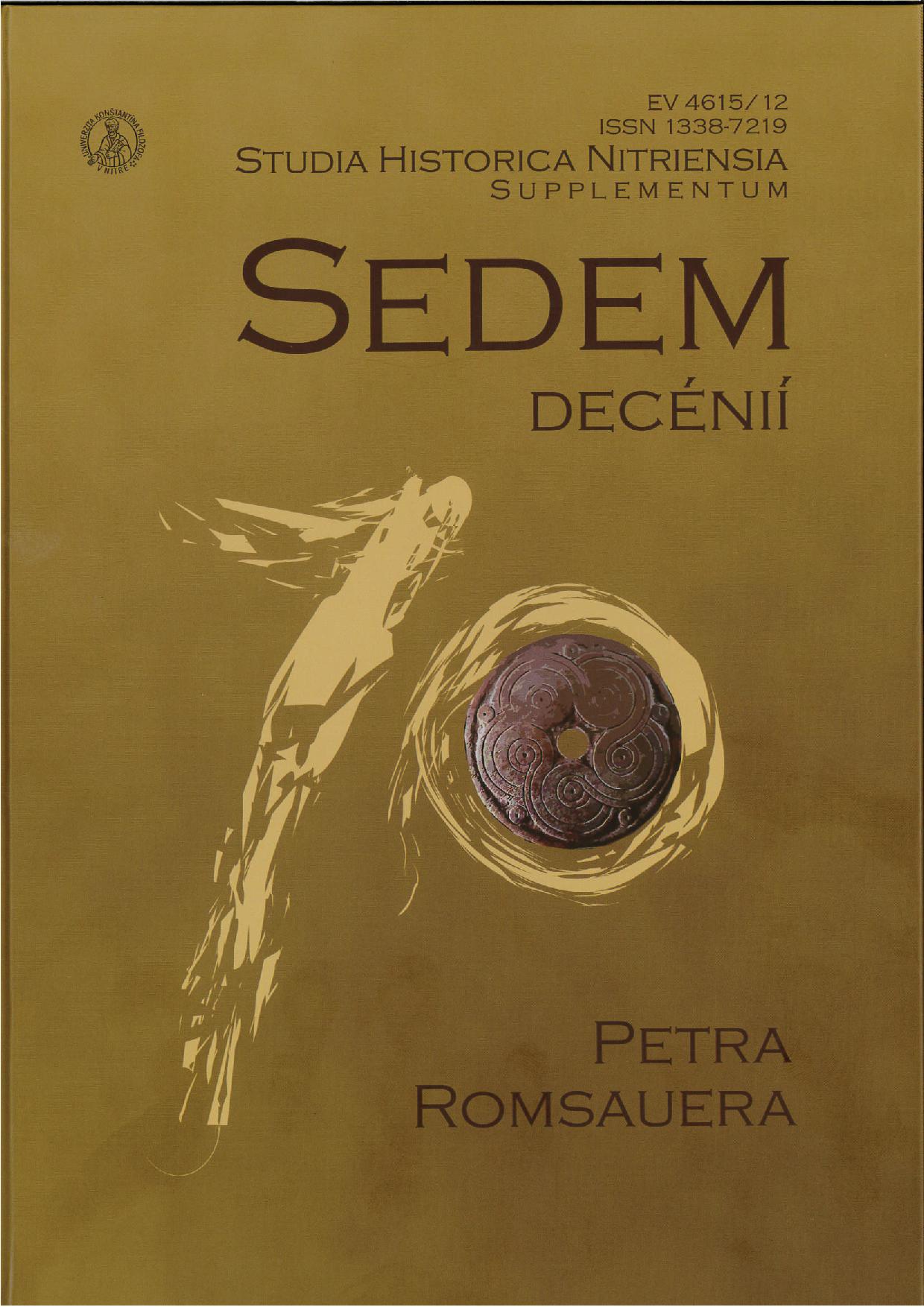K osídleniu Chotína v dobe rímskej
The settlement of Chotín in the Roman period
Author(s): Ján Rajtár, Eva Kolníková, Klára KuzmováSubject(s): History
Published by: Univerzita Konštantína Filozofa v Nitre, Filozofická fakulta
Keywords: Roman Period; Settlement; Fibulae; Coins; Terra Sigillata;
Summary/Abstract: Aerial prospection and systematic field surveys have documented an exceptionally intensive and extensive settlement in Chotín during the Roman Period. Its beginnings go back to the second half of the 1st century, when it was settled by the Germanic tribes. It continued to grow in the 2nd century, flourished in the 3rd and 4th centuries and survived until the Migration Period in the early 5th century. Farmstead structure of settlements with trench fencing around residential and farm structures has been detected in some parts of the area. Traces of a Roman temporary camp of approximately 1 hectare dating to the Marcomannic wars have also been found there. The short distance of the settlements from the Roman borders on the Danube had a huge impact on the immediate contacts between the local population and the adjacent part of the Roman province of Pannonia. Here, in the foreground of Brigetio, an important market settlement was probably founded as early as in the 2nd century. It may have been this settlement that Claudius Ptolemy refers to as Kelemantia. The existence of the settlement is attested by a number of imported Roman goods. With 649 fragments of terra sigillata and 747 Roman coins, the settlement outnumbers all sites in the Central European Barbaricum, and documents the extremely intensive trade exchange with the neighbouring Roman territory. The Germanic settlements in Chotín are likely to have played a key role also in the distribution of Roman imports along the eastern branch of the Amber Road, which led further north to the nearer and farther regions.
Journal: Studia Historica Nitriensia
- Issue Year: 21/2017
- Issue No: SUPPL.
- Page Range: 173-193
- Page Count: 21
- Language: Slovak

